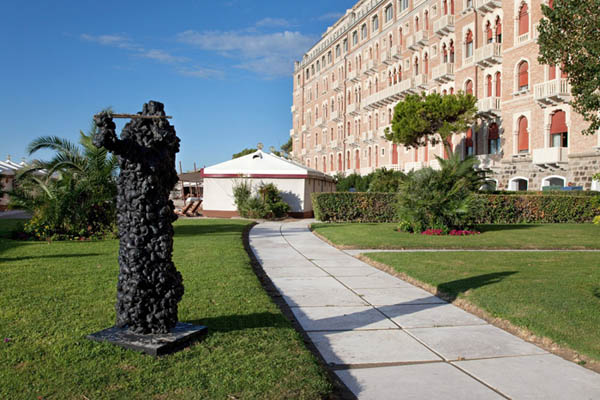ARGENTINA - LEÓN FERRARI
The last shaman of Art
Ever since antiquity, well before the word, the sign was a means for communication with the divinity, for relating to men and transmitting and handing down one’s beliefs, experience or hopes for the future to later generations. For thousands of years it has been a conscious or unconscious investigation that has left behind amazing images, over the centuries and for those that are still to come. Many artists have used the sign to express their emotions, their certainties, joys, or the dramas that they wished to show to the world. In modern art, many have investigated the sign through an unconscious analysis of their own; we need only think of Jackson Pollock or Mark Tobey, great names in twentieth-century sign, or of the Parole in Libertà dei Futuristi (Balla, Carrà, Cangiullo, Boccioni, Marinetti), signs that are closer to us, arriving then at Tancredi or Capogrossi, at Visual Poetry (Pignotti, Sarenco, Miccini) or at the Fluxus (Yoko Ono, Beuys, Ben Vautier, Spoerri, Maciunas). The Argentine artist, León Ferrari, is an outsider, defying classification in any group, who for years has been using the sign with a profoundly and constructively provocative attitude. He has always dared: ever since his first works, when he started creating unusual ceramic shapes, scattering conventionality with curious lines and thus declaring what his art was to be. In 1964 he began an investigation which resulted in a work entitled Quadro escrito, which is internationally acknowledged as one of the cornerstones of Conceptual Art. He personally paid a dear price during the atrocities of the military dictatorship in Argentina, an experience that left its mark on all his future work. Another milestone is a work of 1976, Nosotros no sabiamos, a sentence that is steeped in all the tragedy of an evil regime. His sign, his hand, his intelligence and his art protest against all forms of power and abuse of man, who is viewed as an individual with his own rights and his own culture. His work is not an ideologized search, but a hymn to freedom: a queen that reigns over everyone and everything. He is without a doubt one of the great living surrealists (let us not forget that the major critic of this movement, Arturo Schwarz, wanted him to show his work in Milan, in no uncertain times); he has dialogued, and today still disputes with the established power. Who can forget the scandal that surrounded his work back in 1965 that showed Christ crucified on an American bomber? The image went round the world several times. For some time now, he has added another primary means of communication to his research on the sign: music. He constructs huge cages in which naked women, their bodies covered in writing, interact with the spectator through music, which is created by striking the bars of León’s sculpture with their skin covered in signs. An initiatory work. In the work of a shaman there is certainly more surrealism than in lots of other art. León is one of the few shamans left in the art world. Beuys, another great shaman, in his famous work with the Wolf, a performance held at the Guggenheim Museum, also stressed the importance of symbols in the contemporary art world. For the artist the symbols on which his new work is hinged are to be found in his latest study: cages and musicians. Musicians, impertinent and irreverent characters that people his studio in Buenos Aires and now all over the world, and who, with their image, confirm how important it is for the message to reach hearts through music. Music which has always expressed symbols, messages, beliefs and hopes in a better world. Hopes that the young heart of a great old man, a great artist like León Ferrari, knows how to transmit to the world.
Thank you, León.
Text by Daniele Crippa
